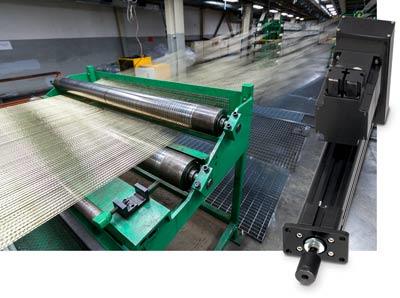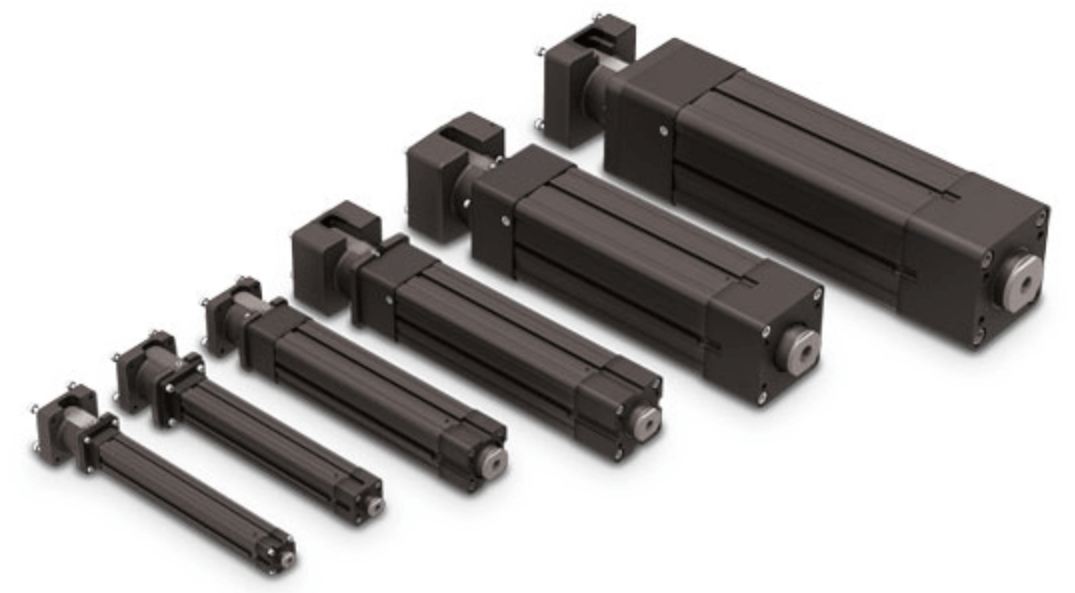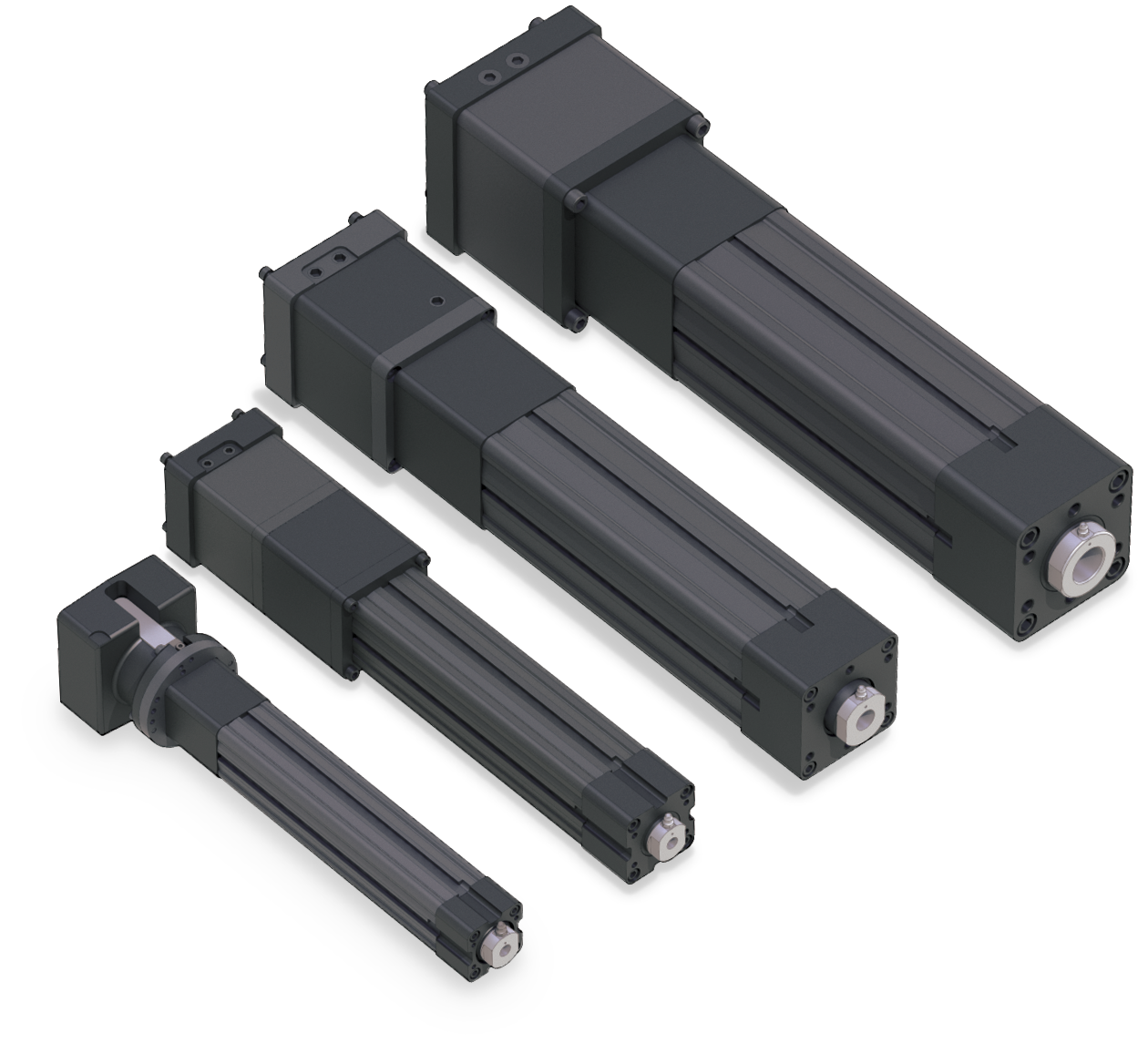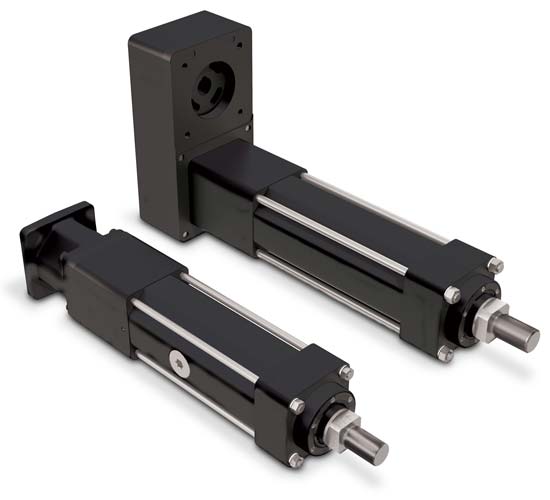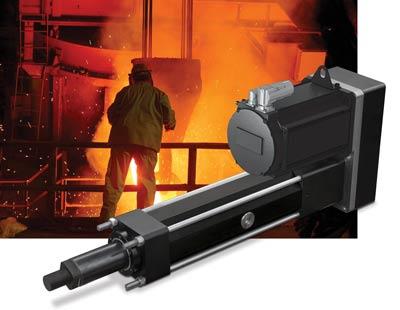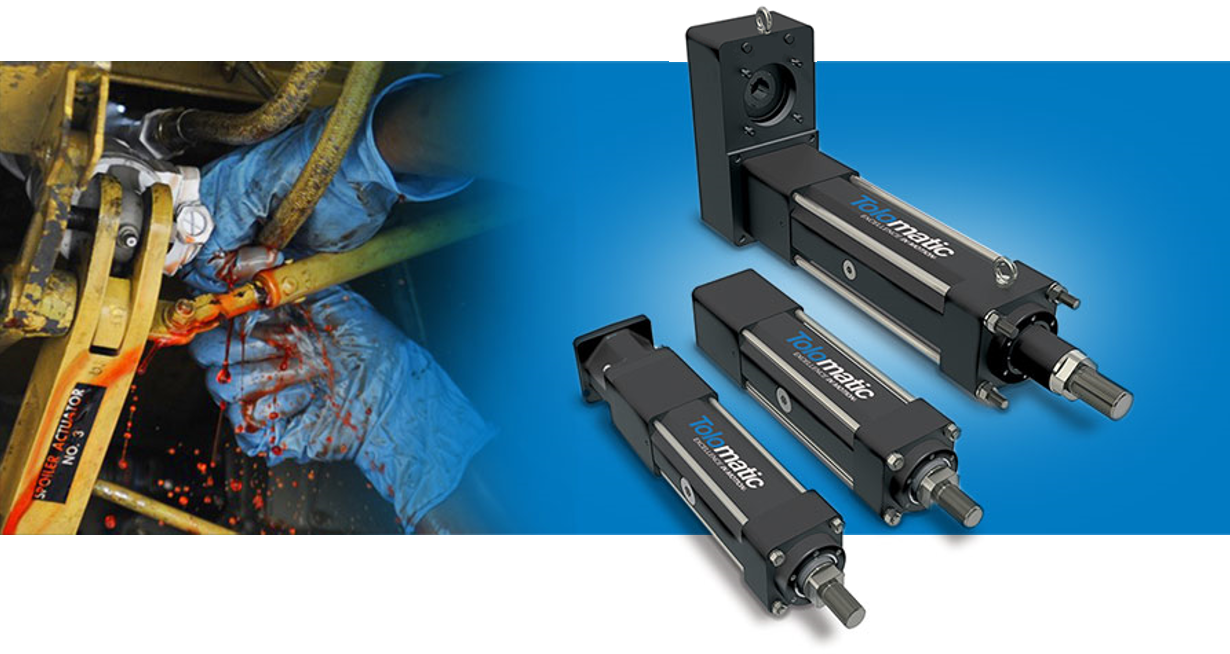Electric vs. hydraulic
For decades, hydraulic cylinders have proven themselves in industrial automation due to their high forces, robustness and low cost.
However, increasing demands in automation and the growing technical advances of electric actuators have led to ongoing controversies as to which technology - hydraulic or electric - offers the best overall solution for the same application.
Download the whitepaper (left) to learn more about the pros and cons of both technologies.
As mentioned earlier, hydraulic actuators can generate very high forces and are generally less expensive to implement than electric servo systems in terms of initial cost. To ensure optimal system performance, there are also some drawbacks associated with them, such as the need for a large footprint, regular maintenance, and manual system adjustments. Furthermore, hydraulic systems are susceptible to temperature fluctuations, tend to leak, and operate in an open loop, which presents challenges for data acquisition. To counteract some of these problems, servohydraulics can be implemented. However, servohydraulics have a larger footprint and are very costly to implement. Hydraulics offer long life, but are not nearly as efficient as electric systems.
Electric systems have a smaller footprint than hydraulic systems and also provide precise position, speed and velocity control with more efficient operation. They operate in a closed loop for easy data collection and are virtually maintenance free. Because of their higher accuracy performance, electric servo systems can be more expensive than hydraulic ones for initial implementation. However, the increased efficiency of operation with little or no maintenance over the life of the system results in a lower total cost of ownership over the life of the system and makes it an attractive alternative to hydraulics.
Because electric actuators are capable of achieving high hydraulic forces today, they will continue to be considered as a replacement for hydraulic actuators in many applications in the future.

